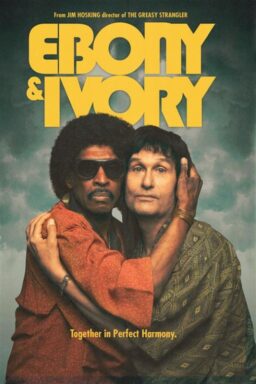Two images of the Virgin Mary came my way last week. Both of them caused me to think about their messages, which is the purpose of holy images.
One was a medal attached to a holy card from the shrine at Medjugorje in Bosnia, where more than 30 million faithful have journeyed to worship since, it is said, the Virgin appeared there in 1981 to three children.
The other is a reproduction of the portrait by the African artist Chris Ofili, “The Holy Virgin Mary,” which has made New York Mayor Rudolph Giuliani so unhappy.
The holy card shows a young woman of movie-star beauty, dressed in flowing robes of blue and white, her alabaster skin set off by subtle but perfect makeup. The painting now hanging in the Brooklyn Museum of Art shows an African woman in a tribal gown.
Giuliani was offended by two aspects of the painting: It incorporates small areas of elephant dung, and “pornographic images” of bare buttocks surround her.
Since that is the only information about the painting that has been communicated by the mainstream news media, I was startled to read an article in Salon magazine informing me:
1. Chris Ofili, the artist, is a practicing Catholic. 2. The leavings of elephants are revered in some old tribal customs as a gift from the most respected jungle beast. To incorporate them into a painting adds worth to the paintings in the same way that one might use gold gilt in mixing a paint. Ofili was following a tradition that is centuries old.
3. The bare buttocks are intended to remind us of the clouds of plump little bare-bottomed cherubs that float in the air around countless Renaissance paintings of the Virgin.
Both of the paintings, in short, portray the Virgin in terms intended to be attractive to members of the artist’s race. The Medjugorje virgin looks like a pretty European model. The Ofili virgin is a healthy African woman. Both have artifacts associated with them. The Medjugorje image came with a little holy medal attached to the same card. The Ofili was enhanced by a respected organic substance.
I am reminded of a long evening spent talking under the stars with the Rev. Andrew Greeley a few summers ago in Michigan, where on the shores of the lake we discussed matters theological. Greeley confided that he thought many of the reported appearances of the Virgin Mary were not genuine.
“The one I think is most likely genuine,” he said, “is the appearance at Lourdes. There she was short and dark. Everywhere else, she is tall and fair.”
Indeed, a historic woman living in the Holy Land at the time of Christ would have looked more like the image now hanging in Brooklyn than the holy card from Croatia. I don’t think either painting is a great work of art. But the Ofili painting inspired me to think about the Virgin Mary – who she was, what she stood for, where she came from – while the Medjugorje image was souvenir-shop banality, blurring with all the other holy cards of my Catholic boyhood.
When I mentioned the Brooklyn painting in an article last week, a correspondent sarcastically said he was waiting for the artist to produce a painting of Martin Luther King Jr. in elephant dung.
Ah, but I’ve got him there. According to the same useful article in Salon by Daniel Kunitz, another painting by Chris Ofili, titled “Afrodizzia,” contains “a number of elephant-dung clumps on which the names of black heroes like Miles Davis, Cassius Clay and Shaft are inscribed.” It is unlikely, Kunitz concludes, that this painting is intended as an attack on African-American heroes.
What lesson do I draw from all of this? That Giuliani’s cultural bias is showing.
Now that he has all the facts at his command, I expect him to denounce the art of the Italian Renaissance because it makes the Virgin and all the other Biblical figures look unmistakably Italian, instead of Semitic or North African, and surrounds them with bare-bottomed cherubs.
Museums in New York exhibiting such paintings by Titian, Veronese and Michelangelo should of course have their tax dollars cut off immediately.











